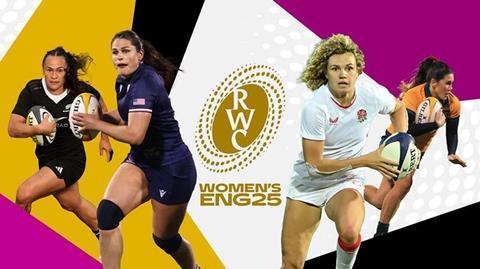Average viewing time hits nine hours 45 minutes, beating 2023 record by 16 minutes

Women’s sport has reached record viewing time in the UK, according to the latest Women’s Sport Trust Visibility Report.
The period from January to September of this year saw the average viewing time his nine hours 45 minutes, 16 minutes more than the previous high in 2023. It is also more than double that of 2024, helped by the return of major tournaments such as the Women’s Euros and Women’s Rugby World Cup - which also both saw success for England’s teams.
There is also a record number of total viewing hours, with 357 million across free-to-air and pay TV, 18 million more than in 2023. This is particularly driven by a record number of free-to-air hours, with 300 million - 30 million more than in 2023. The top two most watched events of the year were also from women’s sport - the Women’s Euros final on the BBC and ITV (16.2m viewers) and England’s semi-final on ITV (9.8m).
The report also found that these linear audiences are skewing older for women’s tournaments than the men’s equivalents. For the Rugby World Cup, 70% were aged 55+, compared with 55% for the men’s Rugby World Cup in 2023. Similarly, 60% of the Women’s Euros broadcast audience were 55+, versus 49% for the men’s tournament in 2024.
As would be expected, streaming skewed younger, with 15.5 million streams of the Women’s Euros and 10.5 million for the Rugby World Cup across BBC iPlayer and BBC Sport platforms, and 20% of Women’s Euros streams coming from viewers aged 16–35.
Female audiences also hit record levels, although men still make up a majority of viewers. Women made up 44% of the Women’s Euros audience and 43% of the Rugby World Cup audience – the highest on record for both competitions. The finals drew even greater proportions, with females accounting for 48% of viewers for the Women’s Euros final and 47% for the Rugby World Cup final.
Other report highlights
- Over half (52%) of the Women’s EURO audience in July had previously watched women’s sport on broadcast TV in the first six months of 2025.
- Emma Raducanu’s third round match with Aryna Sabalenka drew the 3rd highest peak audience for Wimbledon in four years for a non-final match and was the 5th most-watched women’s sport moment of the year.
- Viewing hours of the Netball Super League season grew more than 300% in 2025.
- Average audience across all women’s Hundred matches were +26% vs. 2024 to 153k.
- Women’s 4x100 Relay Final drew a peak audience of 1.95m at the World Athletics Championships.
- Sky Sports average live audience for 2025 AIG Open +18% vs. 2024 to 86k.
There was also major growth for the top women’s sport channels on social media platforms. The Women’s Euros TikTok account drew 488m views (unsurprisingly 517% up YoY), the WNBA had 349m (12% up YoY) and the NWSL 259m (229% up YoY). Meanwhile, while the WNBA was 40% down YoY with 940m view on Instagram, the Queens League (476m and 1154% up) and WTA (426m and 272% up) were growing.
On YouTube, the top three was the WTA (123m views and 133% up YoY), LaLiga F (39m and 490%) and the WNBA (29m and -6% YoY).
“Our latest Visibility Report shows women’s sport delivering at scale – reaching record audiences on broadcast while continuing to expand its digital footprint,” said Tammy Parlour, CEO of the Women’s Sport Trust. “The biggest moments on UK television have come from women’s sport, and audiences are watching for longer than ever before. While audiences still skew male, we’re seeing a clear rise in female fans engaging more deeply across platforms. That’s a powerful signal of cultural relevance – women’s sport isn’t a niche interest, it’s now a part of the national sporting conversation.
“At the same time, digital and social engagement are expanding who those audiences are and how they connect with sport. The combination of strong broadcast performance and growing online reach shows what’s possible when visibility and accessibility come together. The challenge now is to sustain that visibility year-round and translate it into long-term commercial growth, ensuring women’s sport remains both widely seen and deeply valued.”





No comments yet